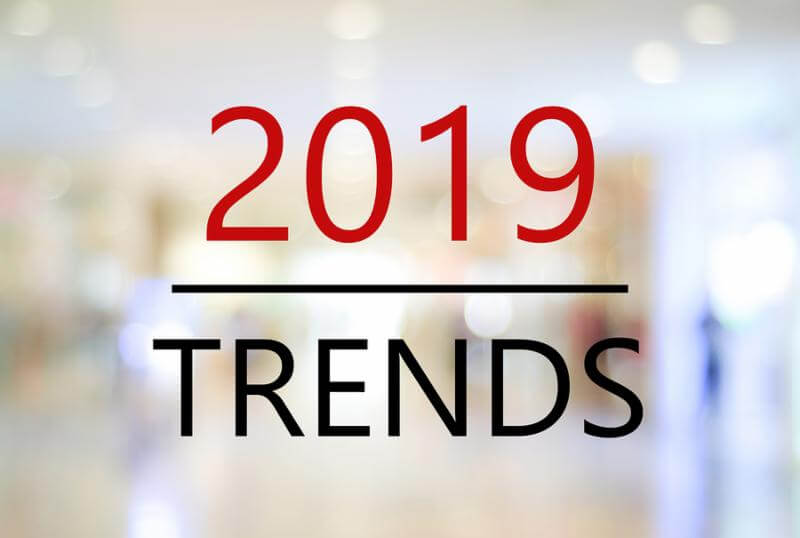With 2019 less than a month away, it's that time to make your marketing plans for the new year ahead. So, whether you’re in the midst of planning or already have a blueprint in place, the following is a list of the top 10 B2B marketing trends based on our perspective of the market and views from across the business landscape. Here goes:
1. Content Marketing lives on. Content Marketing will continue to be a major B2B initiative in 2019. According to the Content Marketing Institute’s latest benchmark report, a majority of organizations will increase their content marketing spending and focus 56% of their investments on content creation. In particular, B2B marketers are ramping up the development of long-form content in the form of in-depth articles, guides and FAQs––ideal formats for re-purposing and ongoing SEO since they only require minor adjustments.

There is one more anticipated change: a heightened focus on content strategy. As Forbes reported on the state of content marketing, organizations are shifting from simply producing content that increases visibility to creating content that presents a thought-provoking point-of-view. This is a great way to differentiate from the great wash of content pablum and more effectively support your brand initiatives.
2. Account-Based Marketing (ABM) is key. ABM, the discipline of focusing on an individual prospect or customer account as a single market, became a key trend in 2017 and is expected to expand next year. ABM builds on the age-old rule that “repeat business” is the number one rule of B2B marketing. It also requires closer alignment with sales organizations and client service groups. Together, this focused, fully-integrated approach accounts for why ABM is proving to deliver a higher ROI than other efforts.
3. Email marketing delivers. When social media erupted, pundits argued that email was dead. That's certainly not the case in the B2B world where, according to Marketing Charts, approximately 60% of B2B marketers indicate that email marketing remains their most effective revenue generating channel. What’s more, email personalization has proven to increase effective rates. Personalized email subject lines are reportedly 26% more likely to be opened and personalized emails have proven to increase transaction rates six-fold.
4. Paid ads coupled with organic search. B2B brands have found that paid search ads can be a quick and measurable way to catapult organic listings on Google––particularly in light of the complexity of how Google rates websites and pages through its E.A.T. Principle: Expertise, Authority and Trustworthiness. While it's important to note that a number of statistics cite organic content marketing as generating three times as many leads as paid ads, search ads reportedly receive twice as many clicks as organic listings for commercial-intent keywords.
5. Podcasts are popular. Podcasts are increasingly viewed as the ideal format for reaching and connecting with today's on-the-move professionals––from everyday commuters to business travelers. Affordable and easier to produce than videos, podcasts present an ideal opportunity to reach key audiences and feature subject matter experts with both new and re-purposed content.
6. Video is still dominant. Video has been a top trend for years, creating an ideal forum to showcase business strengths: expertise and thought leadership, product capabilities, corporate citizenship, and a range of brand stories. With videos representing a majority share of Internet traffic, research from Google indicates that 70% of B2B buyers watch videos throughout their purchasing journey. This may explain why organizations are expected to double their video investments in the year ahead.
7. LinkedIn as the primary Social Media forum. According to LinkedIn (and we believe them), the platform has emerged as the number one social media network for the distribution of B2B content in reaching B2B buyers, researchers and influencers. With more than half of the 90% of B2B social traffic reportedly coming from this channel, it is expected that B2B marketers will not only further leverage their LinkedIn profiles in 2019 but re-evaluate the merits of allocating resources to other feeds.
8. Marketing Automation. As we reported in our last Insight, Marketing and Technology at Warp Speed, marketing automation is a major trend, taking advantage of today’s new technologies and dramatically supporting content marketing efforts with automated responses to client inquiries and expressed interests. According to the Brafton Fuel your Brand blog, marketing automation systems are not only being increasingly adopted by B2B brands but they are being integrated with other marketing technologies and CRM systems to maximize impact.
9. Artificial Intelligence (AI) enters the fray. We also stipulated in Marketing and Technology at Warp Speed that Artificial Intelligence has made its way into B2B marketing. AI technologies include algorithms that help to make sense of today's mass amounts of big data and in turn, identify trends, provide additional client/buyer insights and provide support to marketing automation response capabilities. While still nascent, AI is working its way into the marketer’s lexicon, keeping pace with AI's increasing role in everyday consumer activities.
10. It’s all about Client Experience. We’ve saved the best for last. Delivering a meaningful client experience is arguably the single most important trend for 2019. The very same factors that PwC identifies as defining the customer experience in the consumer world––speed, convenience, knowledgeable service and friendliness (a great example of how the personal touch is never out-of-fashion)––are now coloring the B2B client experience. So, how do you create a desirable experience that ensures trust, loyalty and satisfaction?
For starters, it means avoiding making incessant cold calls and emails while providing faster problem-resolution protocols for customer service, clear UX on mobile sites and apps, and ease in locating information online. What’s more, delivering the customer experience embraces nearly all the other trends heretofore listed––delivering thoughtful information through personalization and interactivity, as customers and clients don’t want to acquire information, they want to experience it.
So, how many of these activities are built into your plans? It’s never too late to make smart adjustments. Good luck in 2019!!
Feel free to reach out to Maria at mjlilly@mjlilly.com with any questions or comments.